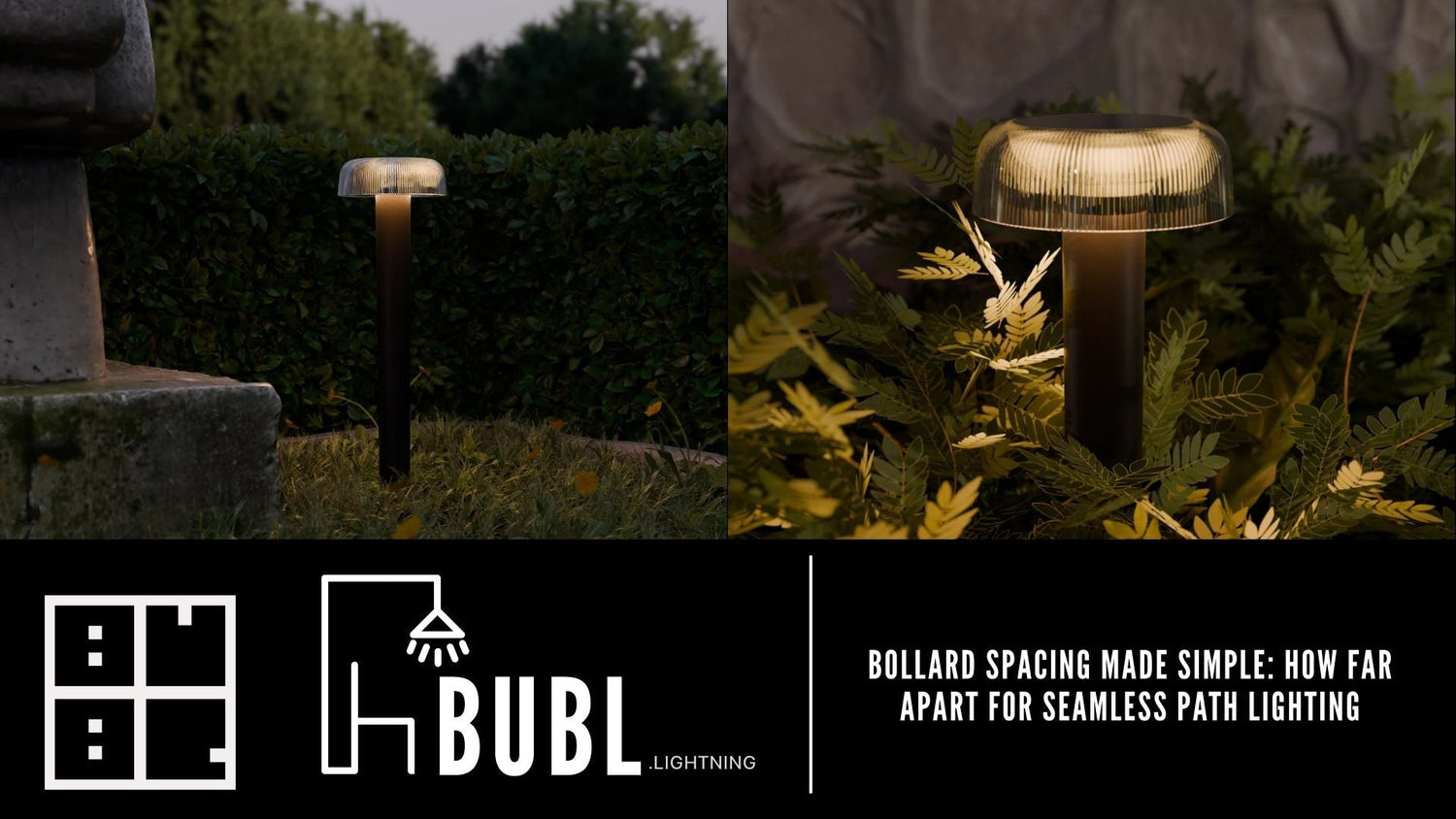
Bollard Spacing Made Simple: How Far Apart for Seamless Path Lighting
Share
Why Bollard Lighting Matters for Pathways and Gardens
Bollard lighting is essential for both safety and aesthetic appeal in outdoor spaces. These vertical fixtures are commonly used along pathways, driveways, and gardens, providing focused illumination that enhances security while boosting curb appeal. Bollard lights help guide visitors, improve visibility, and create a welcoming atmosphere, especially after dark.
A bollard light is a short, decorative light fixture designed to illuminate walkways and outdoor areas, offering a perfect blend of security and beauty.
How Far Apart Should Bollards Be? The Rule of Thumb
For effective illumination, space bollards 6–8 feet apart for garden paths and 10–12 feet apart for driveways. Spacing depends on factors like beam spread, fixture height, and brightness. Larger beams allow for more distance between bollards, while higher brightness levels may need fixtures placed closer together for optimal coverage.
Layouts That Work: Straight Line vs Zig-Zag Spacing
Straight-line layouts work well for long, narrow pathways, providing uniform lighting, while zig-zag arrangements add visual interest and can illuminate larger or irregular spaces. For example, a 20-meter garden path could require 5–6 bollards, spaced evenly in a straight line or zig-zag pattern, depending on your design goals.
Choosing the Right Bollard Lights for Your Space
Consider solar bollard lights like Oslo, Cairo, and Bali for eco-friendly and efficient illumination. For a 20-meter pathway, 5–6 bollards are typically sufficient. While Philips bollard lights are popular, solar bollards offer greater sustainability, lower maintenance, and energy savings.
Extra Tips for Perfect Installation
To minimize glare, angle your bollards or choose fixtures with frosted tops. Be mindful of plantings around bollards; ensure they don’t obstruct the light. Use a printable spacing chart to help plan your installations for a seamless lighting layout.
Budgeting and Next Steps
Solar bollards are an investment in both your outdoor space and sustainability. Though the upfront cost is higher, they save money in the long term by reducing energy consumption. Wired bollards, while cheaper, incur ongoing electricity costs.
FAQs
-
What is bollard type lighting used for in outdoor spaces?
Bollard lights are used for illuminating walkways, driveways, and gardens, enhancing both safety and curb appeal. -
How far apart should bollards be placed along a garden path?
Bollards should be spaced 6–8 feet apart for garden paths to ensure optimal lighting.
-
What’s the ideal bollard distance for driveways vs pathways?
For driveways, bollards should be spaced 10–12 feet apart, while garden paths require 6–8 feet spacing. -
Do bollard lights improve both safety and curb appeal?
Yes, bollard lights increase safety by illuminating pathways and enhance the beauty of your garden or driveway. -
What’s the difference between straight line and zig-zag bollard layouts?
Straight-line layouts provide uniform lighting, while zig-zag layouts offer a more dynamic lighting effect. -
Are solar bollards better than wired bollard lights?
Solar bollards are more eco-friendly and cost-efficient in the long term, while wired bollards may require more maintenance and incur electricity costs. -
How do I prevent glare when installing outdoor bollard lighting?
You can angle the bollards or use fixtures with frosted tops to diffuse light and prevent glare.
-
Can plants or shrubs be placed near bollard lamps?
Yes, but ensure the plants are not too tall or dense to block the light. -
How many bollards do I need for a 20-meter pathway?
You will typically need 5–6 bollard lights spaced evenly for a 20-meter pathway. -
What is the typical lifespan of solar bollard lights?
Solar bollard lights typically last 6–8 hours on a single charge, depending on the battery and sunlight exposure.